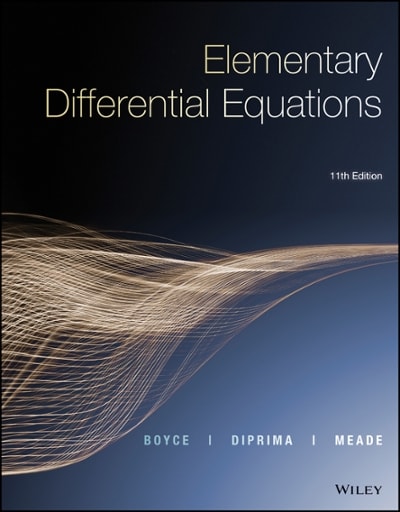Question
Question 1 A sample of n=16 observations is drawn from a normal population with =1000 and =200. Find the following and give detailed response to
Question 1
A sample of n=16 observations is drawn from a normal population with =1000 and =200. Find the following and give detailed response to you answer
a) P( x > 1070 )
b) P( 990 < x 1150)
Question 2
In an attempt to assess total daily travel taxes in various cities, the Global Business Travel Association conducted a study of daily travel taxes on lodging, rental car, and meals. The data contained in the file TravelTax.xls are consistent with the findings of that study for business travel to Chicago. Assume the population standard deviation is known to be $8.50 and develop a 95% confidence interval of the population mean total daily travel taxes for Chicago. Give your reasoning behind your answer.
Below is TravelTax.xls file
Lodging, Car Rental, and Meal Taxes ($)
38.02
41.89
47.44
40.14
47.69
44.02
32.93
33.32
33.90
36.53
43.01
33.22
35.65
39.47
38.86
42.42
47.71
45.03
53.73
36.07
49.95
31.81
63.43
31.50
64.13
42.14
46.78
30.45
47.35
39.42
39.79
43.63
34.03
35.74
48.43
30.92
44.45
41.63
27.23
41.03
43.87
46.07
34.34
39.57
36.40
48.18
42.92
35.57
45.68
43.14
55.21
34.73
26.40
40.66
37.66
28.63
38.17
45.16
46.19
49.58
48.14
45.61
34.22
44.34
55.14
37.00
48.78
52.77
49.07
38.14
45.35
42.59
41.27
20.93
30.70
43.00
50.91
38.56
41.31
39.18
33.57
25.09
30.05
19.28
32.47
53.97
47.32
35.61
44.11
38.97
37.48
40.55
52.03
46.86
46.07
34.89
42.93
49.64
44.35
41.66
39.80
50.31
36.59
33.40
45.51
44.43
47.65
36.24
32.03
32.81
31.64
40.18
34.13
33.22
48.60
40.66
43.37
41.08
34.11
52.91
31.76
56.03
33.61
40.11
53.77
34.73
35.58
48.28
31.89
34.71
37.44
34.77
31.82
39.98
44.66
31.78
21.69
43.23
54.00
46.55
44.85
42.15
25.67
50.25
44.62
44.30
45.09
35.12
34.06
31.77
36.55
36.79
29.65
47.66
25.91
47.27
32.31
42.52
46.86
48.75
38.81
33.66
27.24
46.40
50.95
39.74
35.47
35.95
29.51
62.77
37.72
45.80
39.91
33.28
39.63
28.57
38.14
36.04
40.13
35.51
31.49
39.49
37.69
50.34
44.10
45.61
46.51
53.00
35.40
25.64
47.65
47.49
32.76
45.41
28.77
37.32
28.64
50.67
33.77
40.88
Question 3
Determine the probability that in a sample of 100 the sample proportion is less than 0.77 if p=0.8. Give detailed response on answer
Question 4
U.S. National Bureau of Standards defines ``specification'' as follows:
A set of conditions and requirements, of specific and limited application, that provide a detailed description of the procedure, process, material, product, or service for use primarily in procurement and manufacturing.
A nonconformity is a quality characteristic that does not meet stipulated specifications. A nonconforming unit has one or more nonconformities such that the unit is unable to meet standards (or specifications) and is unable to function as required. For example, the specifications for the inside diameter of an axle might be 20.1 centimeters. This means that an axle with an inside diameter of 2.2 centimeters (or 1.8 centimeters) is defective.
A company has been working to decrease the proportion of defective items among those delivered to one of its major buyers. The specifications set by this purchaser for a certain quality characteristic are within 20.00.3 units. The following measurements have been reported for a sample of 50 items:
20.10 19.75 20.20 20.15 19.90 20.00 19.65 19.92 19.80 20.13
19.98 20.05 20.20 20.23 20.31 20.01 20.49 19.99 20.13 20.18
20.03 19.87 19.93 20.11 20.22 19.84 20.12 20.24 20.03 20.08
20.00 20.11 20.99 20.33 20.11 19.89 20.32 19.76 20.05 19.97
20.05 19.85 19.87 19.67 20.06 19.95 20.09 20.10 19.90 19.73
a) Find a 90% confidence interval for the proportion of nonconforming items. Comment on your result.
b) Find a 95% confidence interval for the proportion of nonconforming items. Discuss and interpret the differences of the two confidence intervals (in Parts (a) and (b)).
c) Can we conclude that the percent nonconforming of all items delivered to the current buyer is more than 13%? Use a level of significance 0.05.
Step by Step Solution
There are 3 Steps involved in it
Step: 1

Get Instant Access to Expert-Tailored Solutions
See step-by-step solutions with expert insights and AI powered tools for academic success
Step: 2

Step: 3

Ace Your Homework with AI
Get the answers you need in no time with our AI-driven, step-by-step assistance
Get Started


